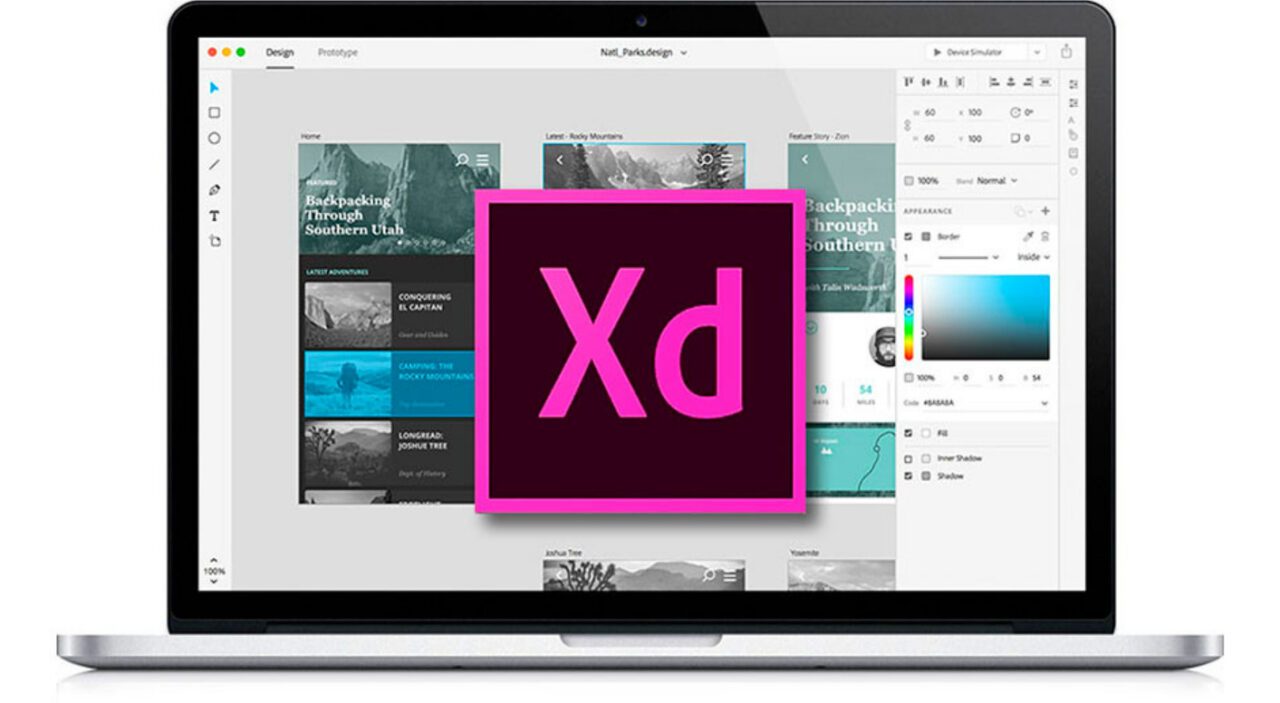Today, all mobile apps you use need mobile designers to design them. Thus, many people want to know how to become a mobile designer to contribute to creating the most modern apps.
With almost twenty years in this field, I can confirm that getting this job is not too challenging, and anyone can achieve it if they don’t give up.
Let’s go through seven steps to get this job! I also will mention the skills required, salary, demand, and other notable details.
What Does A Mobile Designer Do?
As a mobile designer, I create and improve how mobile apps look and work. I focus on making apps easy and enjoyable for people to use on their phones and tablets. Here are my main tasks:
- Understand users: Learn what people want from an app and how they use their devices.
- Plan layouts (wireframing and prototyping): Draw the basic structure of the app to decide where buttons, pictures, and data should go.
- Craft visually appealing interfaces (UI design): Select color palettes, typography, icons, and imagery that resonate with the app’s goal and target audience.
- Design interaction (UX design): Define how users interact with the app by designing intuitive touch gestures, animations, and micro-interactions. Then, I can enhance usability and guide users through the app’s features.
- Test ideas: Make simple app versions that people can click on and use to see what works and what doesn’t.
- Fix bug: If something doesn’t work well or looks strange in the app, I find ways to fix it.
- Teamwork: Work with cross-functional teams, including developers, product managers, and user researchers, to make high-quality apps.
These duties vary depending on the type of company and the specialized position of the mobile designer.
In general, these designers play a role in shaping how users engage with mobile apps. They can transform concepts into captivating interfaces that define the modern mobile experience.

Essential Skills
A combination of hard skills and soft skills is essential for creating successful mobile apps. Here’s a breakdown of the vital skills you need to hone:
- Proficient in UI and UX design.
- Expertise using Adobe XD, Sketch, Figma, or other design software.
- Skill in designing interfaces that adapt seamlessly to various screen sizes and orientations.
- Proficient in creating interactive prototypes for usability testing, analyzing feedback, and iterating designs based on user insights.
- Familiar with HTML, CSS, and sometimes basic JavaScript.
- Have a solid grasp of platform-specific design guidelines (iOS Human Interface Guidelines, Material Design Guidelines, etc.).
- Creativity
- User-centric mindset
- Good communication and collaboration
- Attention to detail
- Problem-solving
- Adaptability
- Time management
Since this job requires you to think creatively and come up with design solutions that stand out and engage users, creativity and design skills are paramount. If you don’t have them, you won’t be able to get the tasks done.
How To Become A Mobile Designer
Becoming a mobile designer will typically require you to have a Bachelor’s degree, know mobile design principles, and be able to use design tools to create quality products.
Here is a seven-step learning and training process to help you lay a strong foundation for the job.
1. Get A Bachelor’s Degree
A Bachelor’s degree is a base for being a mobile designer. It helps you learn essential things (UX concepts, technical skills, etc.) and shows employers you have in-depth knowledge of this field. So, this is your first step in this process.
You can get this degree from various universities and colleges around the world. Even though there’s no exact major called “Mobile Design,” there are options:
- Graphic Design
- Interaction Design
- Computer Science or Software Engineering
- Digital Media or Multimedia Arts
- Information Science or Human-Computer Interaction
In this step, my advice is to consider well-known colleges with strong design departments, as they might have dedicated courses or majors related to mobile design.
You can explore online programs or institutions that offer flexible learning options if attending a physical campus is not feasible.
When choosing a place to study, look into their faculty’s expertise, the courses they offer related to mobile design, any partnerships with pros in the field, and chances for internships or practical projects.
2. Learn Mobile Design Principles

While a Bachelor’s degree provides a foundation, diving into mobile design principles lets you specialize in a growing and essential field within the industry. You can learn these principles while in college to make the most of your time.
What will these principles teach you? They emphasize designing with users in mind and help you create apps that are intuitive, easy to use, and provide a great user experience.
To learn these principles, you can enroll in online courses focusing specifically on mobile design. They helped me a lot when I was still a student and just starting to learn about mobile design.
A helpful tip that helped me master these principles was to study successful mobile apps. You should analyze how they handle navigation, user flows, typography, and interactions. This way, you can learn from real-world examples.
3. Master Design Software & Tools
Using design tools and software is integral to a mobile designer’s duties. You need to learn how to master these tools to work quickly and efficiently.
When you’re comfortable with tools, you can focus on creation rather than struggling with technical aspects.
Besides, different projects might need different tools. Thus, being skilled with various tools makes you more adaptable and versatile as a designer.
You can begin with basic and popular tools like Adobe XD, Sketch, or Figma. Many platforms offer free tutorials on using design software effectively. So you can refer to them.
Then, you can familiarize yourself with more advanced tools such as Axure RP, Origami Studio, and Adobe After Effects.
After knowing the basics, you need to experiment with their features and create your own designs, even if they’re small projects.
As a mobile designer, you usually use keyboard shortcuts to speed up your work. So, find out what shortcuts these tools have and master them.
In the process, you need someone to advise on your work. Thus, I recommend joining design communities such as online forums and social media groups to share your work and learn from others.

4. Develop A Portfolio
The next step is to make a portfolio. Some people wonder if they can make a portfolio without work experience. The answer is yes.
You can use the projects during your study and practice. They can be practical exercises you do in college or products you create while practicing design tools. You can even include things you make for fun to show your creativity.
To make your portfolio stand out, here are my tips:
- Show mobile apps that have different designs and work in different ways.
- Tell the story of how you make your designs, start with ideas, draw sketches, and then make the final designs. It is better to have pictures of your process.
- If you change an app design, show how it looked before and how your design improved it.
Regarding organization, I recommend using captions and headings and writing a little bit about each design to make your portfolio easy to understand.
Your portfolio is your digital resume, so invest time in creating a visually appealing, user-friendly, and informative showcase of your mobile design expertise.
After having a perfect portfolio, you can use it to apply for positions that match your abilities.
5. Seek Internships or Entry-Level Jobs

Any job starts with an internship or entry-level position. Thus, after you have the basic knowledge and skills of the field, you need to find these positions to practice and improve your mobile design skills.
You can easily find them on job search websites, career fairs, and social media. This step usually won’t bring you income, but it does give you hands-on experience.
When you work in internships or entry-level positions, you will see how designing mobile phones happens in companies. You’ll learn about working with teams, facing challenges, and making designs that work well on mobile devices.
Thus, try your best in this step because it will help you understand the process and the skills required for this job.
Sometimes, if you do a great job during this time, the company might offer you a full-time job. It is a chance to continue your career as a designer and grow in this field.
Don’t forget to put your projects in this process in your portfolio. They are a testament to the practical experience you have gained.
6. Networking

Networking is what you need to do throughout this 7-step process. Yet, the most ideal time to make connections in this industry is when you start gaining experience. At this time, you have more time to meet and connect with people.
Why is networking important? You can learn from other designers’ experiences and get job insights when you connect with them.
The experiences they share are more valuable than the theories you learn in books because that’s what actually happened. These relationships can also lead to job offers, projects, and collaborations you might not find otherwise.
In this step, look for a mentor to help you navigate and develop in this field. You can use online design communities or local design meetups to create relationships and find your mentor.
Sometimes, you can team up with other designers to do projects. It’s a way to learn, help others, and make connections. And if you like someone’s work, you can ask them about it. People usually like to share their experiences.
7. Specialize and Grow

After building a strong foundation, seeking experience, and networking, it’s time to focus on a specific area and keep improving.
First, you need to decide if you want to specialize in a specific aspect of mobile design, like UI design, UX design, interaction design, or app development.
Then, dive deep into your chosen area by finding and applying for the corresponding job. As you specialize, you become an expert in that particular mobile design aspect.
How Long Does It Take To Become A Mobile Designer?
Becoming good at mobile design takes different times for different people. Typically, it takes 4 to 5 years.
If you’re new to design, it might take around 3 to 4 years with classes and practice. After that, you usually need six months to a year to get your first experience from internships or entry-level positions.
The goal is to keep improving over time. There’s no rush; it’s more about steady progress. So, take your time to learn and get better.
Salary Ranges & Job Demand
In 2023, a mobile designer typically makes around $112,555 per year ($104,722 base pay and $7,833 extra pay), and the salary range can go from $62,180 to $168,035 per year.
Regarding the demand, the need for digital designers and web developers, including mobile designers, is expected to grow a lot. From 2021-2031, the jobs in this field are predicted to increase by 23%, much more than other jobs.
Each year, there are estimated to be nearly 22,000 job openings in this field. So, there are good chances of finding a job as a mobile designer due to this demand.
Where Do Mobile Designers Work?
Mobile designers work in various settings. There is a demand for skilled mobile designers across many industries, from tech giants to small startups. Some common places include:
- Tech companies
- Design agencies
- In-house design teams
- App studios
- Game development studios
- Social media companies
While most mobile designers work on-site, you can work as a freelancer. You can take on projects from different clients and have the flexibility to work from anywhere.

FAQs
What Is the Difference Between a Mobile and Web Designer?
Mobile designers create designs for mobile apps, focusing on small screens and touch interactions. Web designers design for websites, considering larger screens and various browsers.
Can I Become A Mobile Designer Without Degrees?
Yes, you can become a mobile designer without a degree. Many designers in my company learned through online courses, self-study, and practical experience. Yet, a Bachelor’s degree will make this path more favorable.
Who Do Mobile Designers Work With?
Mobile designers work with UI/UX designers, developers, product managers, and clients to create mobile apps.
Conclusion
If you have good creativity and want to design helpful mobile apps, mobile design is the right field! Breaking the how to become a mobile designer roadmap into seven steps helps you get a solid foundation before applying for the job.
With this optimal route, you will meet the job requirements and get the desired position. Thank you for reading!
